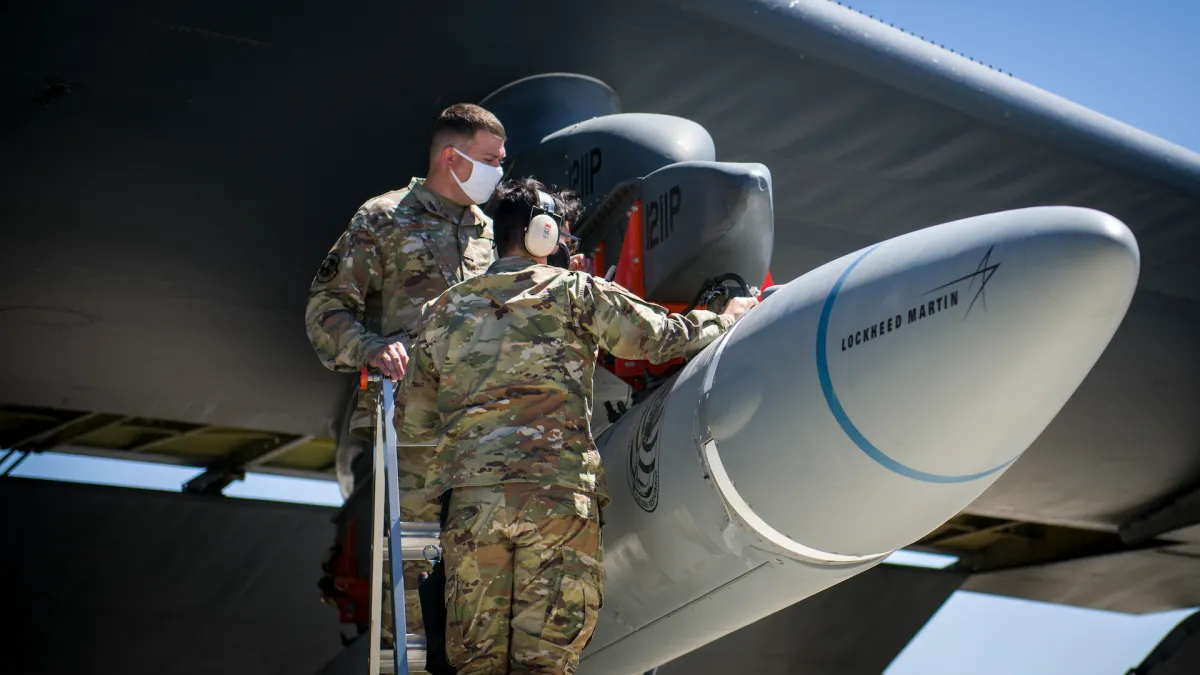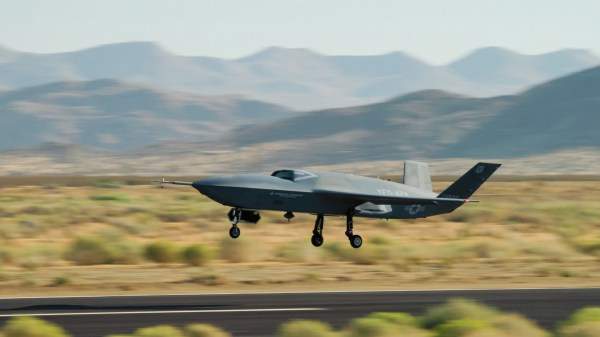Limited test infrastructure, data shortages plague Air Force hypersonics program

A lack of available infrastructure and insufficient means to collect data has impacted the Air Force’s testing campaign for the Air-launched Rapid Response Weapon (ARRW), according to the Pentagon’s test and evaluation office.
Developed by Lockheed Martin, ARRW is a boost-glide missile that uses a rocket motor to reach hypersonic speeds of Mach 5 or higher. Hypersonics are also designed to be highly maneuverable in-flight, making them difficult for adversaries’ air defense systems to intercept them.
ARRW is just one of several hypersonic weapons under development across the Defense Department, and it continues to compete with other services’ programs for access to adequate test and evaluation infrastructure, noted the 2023 annual report of the Pentagon’s Director of Operational Test & Evaluation (DOT&E), which was publicly released last week.
“The program’s flight test schedule is continually challenged to the limited availability and numbers of hypersonic flight corridors, target areas, and test support assets,” the document stated. “To continue system development efforts, the Air Force has conducted flight tests to date using broad ocean area impacts which limited the amount of data collection for terminal flight and measurement of effects (i.e., lethality evaluation).”
In December 2022, the Air Force began what contractor Lockheed Martin has referred to as an “extremely aggressive” schedule for ARRW’s development and testing — with the goal to move the missile into production by fiscal 2024. That month, the service conducted the first all-up round (AUR) test at Edwards Air Force Base in California by launching live warheads of the missile from a B-52H Stratofortress bomber.
The Air Force noted that the first test was a success, and the DOT&E report indicated that the missile demonstrated all phases of flight successfully. But the new report also adds that the service was unable to collect data measurements of the warhead’s function and effects due to a “technical failure” of the testing range’s sensors.
“Due to these sensor system failures, it is unknown if the glide vehicle and warhead functioned as desired in the final phase of flight,” the document stated.
The program’s fate came to a head after Secretary of the Air Force Frank Kendall told lawmakers that ARRW’s second test held in March 2023 was deemed unsuccessful. As a result, he said the service would be more focused on its other hypersonic weapon program known as the Hypersonic Attack Cruise Missile (HACM).
While details about the failed March test have been vague, the new DOT&E report highlights that the missile itself was properly launched from the B-52 and that early data showed successful vehicle flight and warhead detonation. However, “the AUR incurred a failure when the shrouds failed to fully eject properly during booster-glide vehicle separation, as one of two shroud ejector motors appears to have not fired,” the document noted.
Because of that failure, the service was unable to collect data for the glide and terminal phases during the flight test. To avoid future failures, the service added “continuity verification of the ejector motors,” according to the report.
The Air Force has since conducted two more AUR tests of the weapon — one in August 2023 and another in October 2023. The service has not been forthcoming with details on whether or not they were considered successful, instead claiming that they each “acquired valuable, unique data and was intended to further a range of programs such as ARRW and Hypersonic Attack Cruise Missile.”
The report indicates initial data from the August test showed that the missile achieved nominal conditions during flight and warhead detonation. No data from the October AUR test, which took place in early fiscal 2024, was provided by the office.
Moving forward, the Air Force has one remaining AUR flight test budgeted for fiscal 2024 — it already conducted one in October — that will impact land targets instead of those located over the ocean. But the report notes that those two tests for this fiscal year may not be enough.
“Given the limited number of planned test events, there is a risk that the test program will not be able to demonstrate the ARRW lethal effects against the required tactical and strategic targets,” it said. It added that due to limited planned flight hours and test assets, it likely won’t be possible to fully assess the missile’s operational suitability during this current testing phase.
DOT&E is recommending that the Air Force submit a final “Operational Demonstration Plan” to the office for approval before it conducts the final two budgeted AUR flight tests, which are scheduled for fiscal 2024. As of press time, the service has not provide an on-the-record response to DefenseScoop’s inquiries on whether the document has been submitted.
The office is also suggesting that the Air Force “verify, validate, and accredit” the modeling and simulation tools that it plans to use to assess ARRW’s lethality and survivability against surface-to-air missile systems and anti-aircraft-artillery batteries, per the report.
Updated on Feb. 6, 2024, at 9:15 AM: A previous version of this story said the Air Force had two remaining AUR tests budgeted for ARRW in fiscal 2024. However, one of the two AUR tests budgeted for this fiscal year has already been conducted. This story has been updated to note that.






